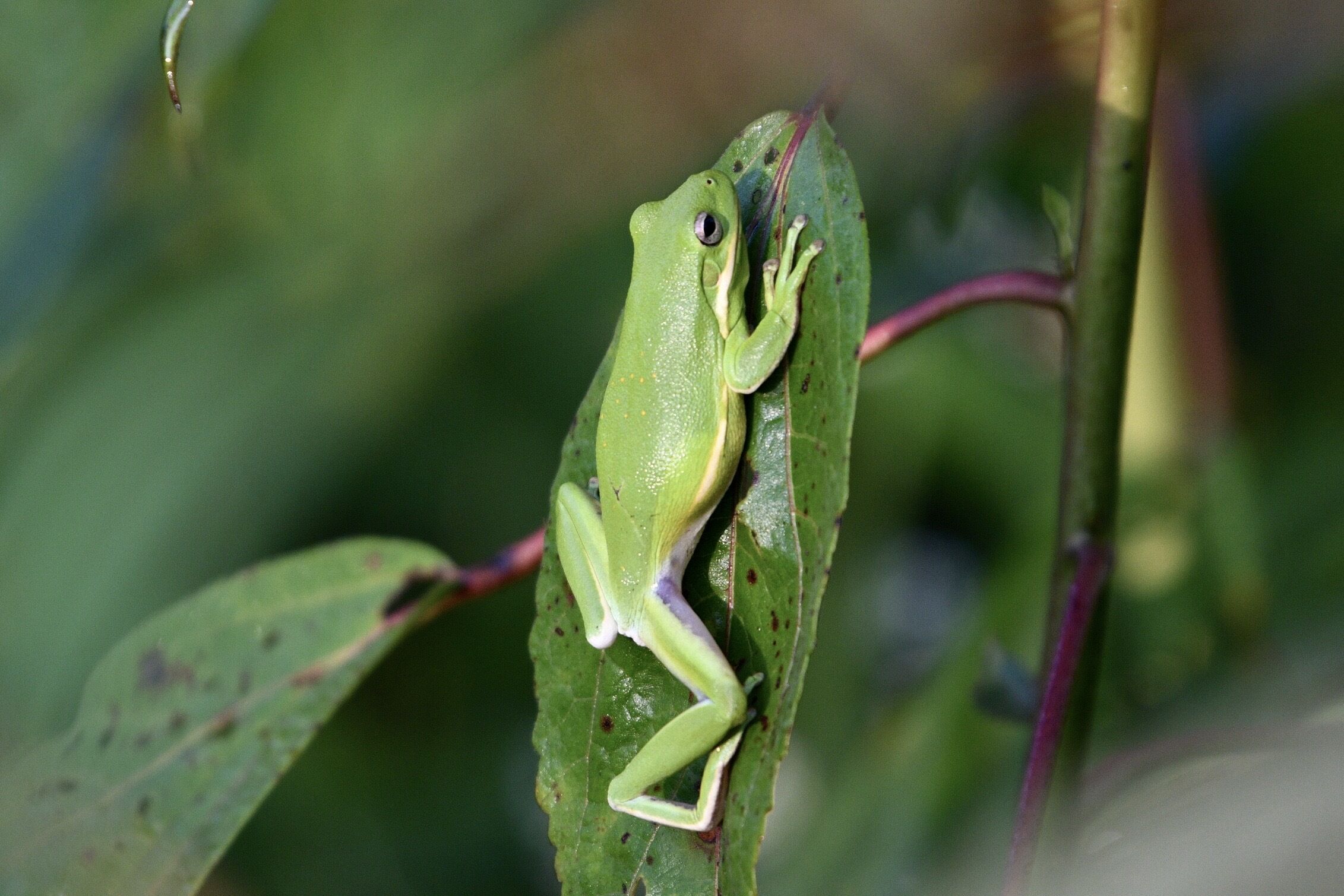
They gather outside at night, get really loud and spend their time looking for mates — and in Maryland’s Montgomery County, there are people taking notes on what’s going on.
The noisemakers are the 14 species of frogs and toads that live in the region, and the people taking notes are volunteers with the Montgomery County chapter of FrogWatch USA.
“We look for Frog Watch volunteers annually to basically help with monitoring our local frog and toad populations,” Rachel Gauza, a natural resources specialist with Montgomery Parks, said.
The breeding season lasts from February through August, and training starts when the weather is still cold enough to require coats and gloves as volunteers head out to listen for their subjects.
Gauza said frogs and toads have sensitive, specialized skin that allow them to absorb water. That leaves them open to absorbing environmental contaminants, too.
She also told WTOP that frogs are like an early warning system: “If their populations are doing well, there’s an abundance of different species and individuals, we know the environment is healthy. When there’s a decline in that or an absence entirely, we know that the environment can be in trouble.”
The fact that amphibians are so vulnerable to changes in the environment underscores the need for people to consider how their actions affect the natural world.
“We can’t look at aquatic habitats in a bubble,” Gauza said. “What we’re doing on land is ultimately affecting those aquatic habitats.”
When volunteers sign up, they agree to monitor populations at specific sites — it could be at a pond or stream, and they go through training that helps them identify the different species of frogs and toads at their assigned location.
“We have about 14 frog and toad species that call our Montgomery County parks home,” said Gauza. “They each make unique breeding calls.”
During training sessions, volunteers will listen to the different trills and chips and learn to separate the different vocalizations of each type.
At volunteer training sessions, Gauza may try to help new volunteers differentiate the calls of, say, a wood frog from a leopard frog with a helpful tip — and an imitation.
“I like to joke that they kind of sound like they’re saying their name, so they’re going ‘w-o-o-o-o-od, w-o-o-o-o-od. It’s a very cute, little quacking, clucking sound,” Gauza said.








